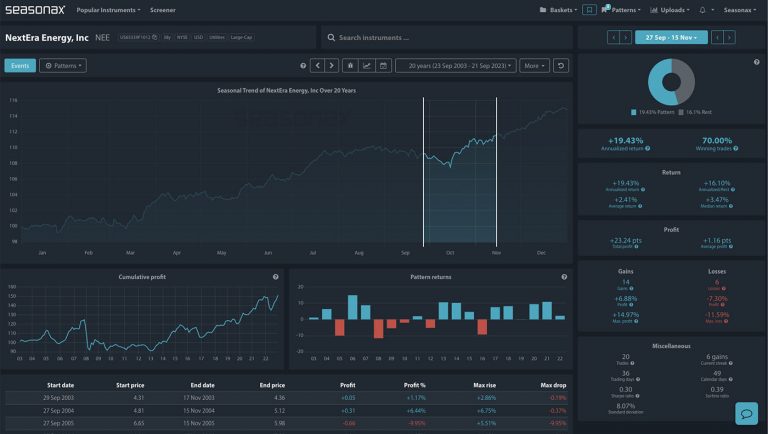In the last issue of Seasonal Insights we showed you the statistics associated with the popular truism “sell in May and go away” in the countries with the eleven largest stock markets.
The comparison divided the calendar year into a summer half-year from May to October and a winter half-year from November to April. In all eleven countries, the winter half-year outperformed the summer half-year!
The Half-Year Patterns of Nine Selected Countries
Below we show you the respective price patterns in the form of charts. These show the chained stock market performance in all eleven countries during the summer months in red, during the winter months in green as well as the full year returns (=actual performance of the index) in blue.
Note: the charts are linearly scaled, as a result of which the performance patterns of the summer and winter half-year periods visually don’t appear to add up to the full year performance.
Canada: Summer Half-Year vs. Winter Half-Year

The winter half-year even beats the full year!
Source: Seasonax
China: Summer Half-Year vs. Winter Half-Year

Prices rise almost as strongly in the winter months as over the full year
Source: Seasonax
France: Summer Half-Year vs. Winter Half-Year

The winter half-year beats the full year significantly!
Source: Seasonax
Germany: Summer Half-Year vs. Winter Half-Year

Once again the winter half-year clearly beats even the year as a whole!
Source: Seasonax
Hong Kong: Summer Half-Year vs. Winter Half-Year

The second-best performing summer half-year in our selection
Source: Seasonax
India: Summer Half-Year vs. Winter Half-Year

Only in India is the market’s performance during the summer nearly as strong as in the winter
Source: Seasonax
Japan: Summer Half-Year vs. Winter Half-Year

If one employs the “sell in May” strategy, even Japan is in a long term bull market
Source: Seasonax
Korea: Summer Half-Year vs. Winter Half-Year

During the winter prices rise almost as much as over the year as a whole
Source: Seasonax
Taiwan: Summer Half-Year vs. Winter Half-Year

In Taiwan the summer half-year is deeply in the red
Source: Seasonax
United Kingdom: Summer Half-Year vs. Winter Half-Year

It suffices to be invested during the winter months
Source: Seasonax
US: Summer Half-Year vs. Winter Half-Year

The winter half-year beats the summer half-year, but not the full year
Source: Seasonax
As you can see, only two of the eleven largest stock markets in the world are actually posting notable gains in the summer half-year: Hong Kong and India.
In all other markets it was sensible and profitable to sell in early May – as in these other countries the markets either posted losses or gains of less than one percent in the summer months. Investing in these markets during the summer was barely worth it, after all, by employing the “sell in May” strategy one is also exposed to less risk because one is only invested half of the time.
Detailed Results by Country
The following table once again shows the half-year results of the eleven countries in detail. Half-year periods in which it was profitable to be invested on a risk-adjusted basis are highlighted in green. Half-year periods in which losses were generated are highlighted in red.
Overview of Country Selection: Half-Year Results

Only in two countries did investing during the summer period generate significant profits
Source: Seasonax
The table once again underscores that the summer weakness (a.k.a. the “Halloween Effect”) does indeed exist. In this case we are looking at a very simple and well-known rule. There exist many more seasonal patterns, which one can inter alia identify with the Seasonax app on Bloomberg and/ or Thomson Reuters. Many of them are still completely unknown.
“Sell in May” by contrast is a rule people have been aware of for decades. Nevertheless, the pattern still works. Apparently a far too few investors are actually taking action based on their knowledge of the pattern and there is almost no arbitrage activity either. The stability and persistence of the pattern suggests that “sell in May” will continue to work in the future.


